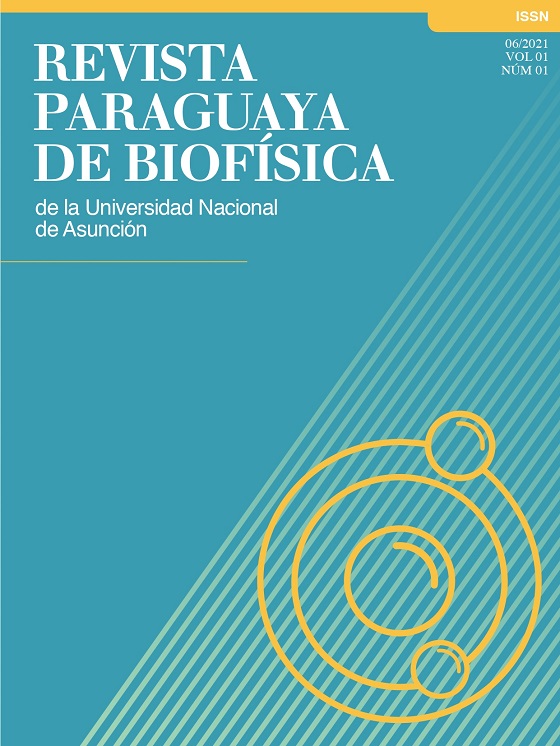Prevalence of Bruxism in first year Medicine students of the Faculty of Medical Sciences of the National University of Asunción, headquarters of Saxony, 2018
Keywords:
Bruxism, university students, medicineAbstract
Introduction: Bruxism is "an oral parafunctional activity when an individual is awake or asleep." In short, it consists of tooth clenching and grinding, is of multifactorial etiology and is mainly associated with stress and sleep disturbances or parasomnias.
Method: An observational, descriptive, cross-sectional study will be carried out. The sampling will be non-probabilistic by convenience. Data will be collected through the application of a closed survey, using survey. It will be applied to a minimum of 109 students of the FCM-UNA.
Results: 110 cases were analyzed; ages between 18 and 30 years old. The frequency of risk of suffering from bruxism in first year medical students is 25.4%, which represents 28 people with medium and high risk (3 people with high risk and 25 people with medium risk) out of the total population. The male population was the population that most frequently presented buxism.
Conclusions: The frequency of risk of suffering from bruxism is low in the surveyed population. When determining the frequency according to sex, the difference between male and female respondents was minimal, with the male population being the most affected.
Downloads
References
(1) Frugone Zambra RE, Rodríguez C. Bruxismo. Av Odontoestomatol [Internet]. 2003 Jun [citado 2018 Oct 12] ; 19(3): 123-130. Disponible en: http://scielo.isciii.es/scielo.php?script=sci_ arttext&pid=S0213-12852003000300003&lng=es
(2) Medlineplus.gov. (2018). Bruxismo: MedlinePlus enciclopedia médica. [online] Available at: https://medlineplus.gov/spanish/ ency/article/001413.htm [Accessed 13 Oct. 2018].
(3) [Spanish] SurveyMonkey. (2018). Calculadora del tamaño de muestra: entender los tamaños de muestra | SurveyMonkey. [online] Available at: https://es.surveymonkey.com/mp/sample- size-calculator/ [Accessed 13 Oct. 2018].
(4) Manuel Hernández Aliaga. Estudio sobre el bruxismo y una nueva prueba de esfuerzo.[Tesis doctoral]. Murcia: Facultad de Medicina y odontología, Universidad de Murcia; 2010.
(5) Sousa HCS, Lima MdDMd, Neta NBD, Tobias RQ, Moura MSd, Moura LdFAdD. scielosp.org. [Online].; 2018 [cited 2018 Mayo 28. Available from: https://scielosp.org/scielo.php?script=sci_ arttext&pid=S1415-790X2018000100401&lang=pt
(6) Fierro NC, González-Ramírez MT. scielo.org. [Online]; 2017 [cited 2017. Available from: http://www.scielo.org.bo/sielo.php?script=sci_arttext&pid=S 2077-21612017000200002&lang=pt
(7) Vieira GF, Amorim CSM, Firsoff EFO, Frutuoso JRC, Puliti E, Marques AP. scielo.br. [Online].; 2016 [cited 2016 Oct./Dec. Available from: http://www.scielo.br/scielo.php?script=sci_ arttext&pid=S1809-29502016000400423&lang=pt.
(8) scielo.isciii.es. [Online]; 2014 [cited 2014 nov./dic. Available from: http://scielo.isciii.es/scielo.php?script=sci_arttext&pid=S0213-12852014000600005&lang=pt
(9) Contreras AMS. scielo.sld.cu. [Online].; 2015 [cited 2015 Ene/ febr. Available from: http://scielo.sld.cu/scielo.php?script=sci_ arttext&pid=S1561-31942015000100009&lang=pt
Downloads
Published
How to Cite
Issue
Section
License
Copyright (c) 2021 José Hellman, Gimena Hidalgo, Marcelo Hugo, Óscar Ibarra, Tomás Insfrán, Rebecca Irala, Juan José Jara, María Paz Jara, Victor Ledesma

This work is licensed under a Creative Commons Attribution 4.0 International License.





